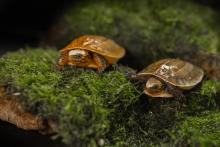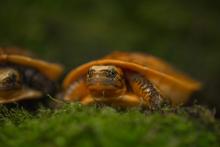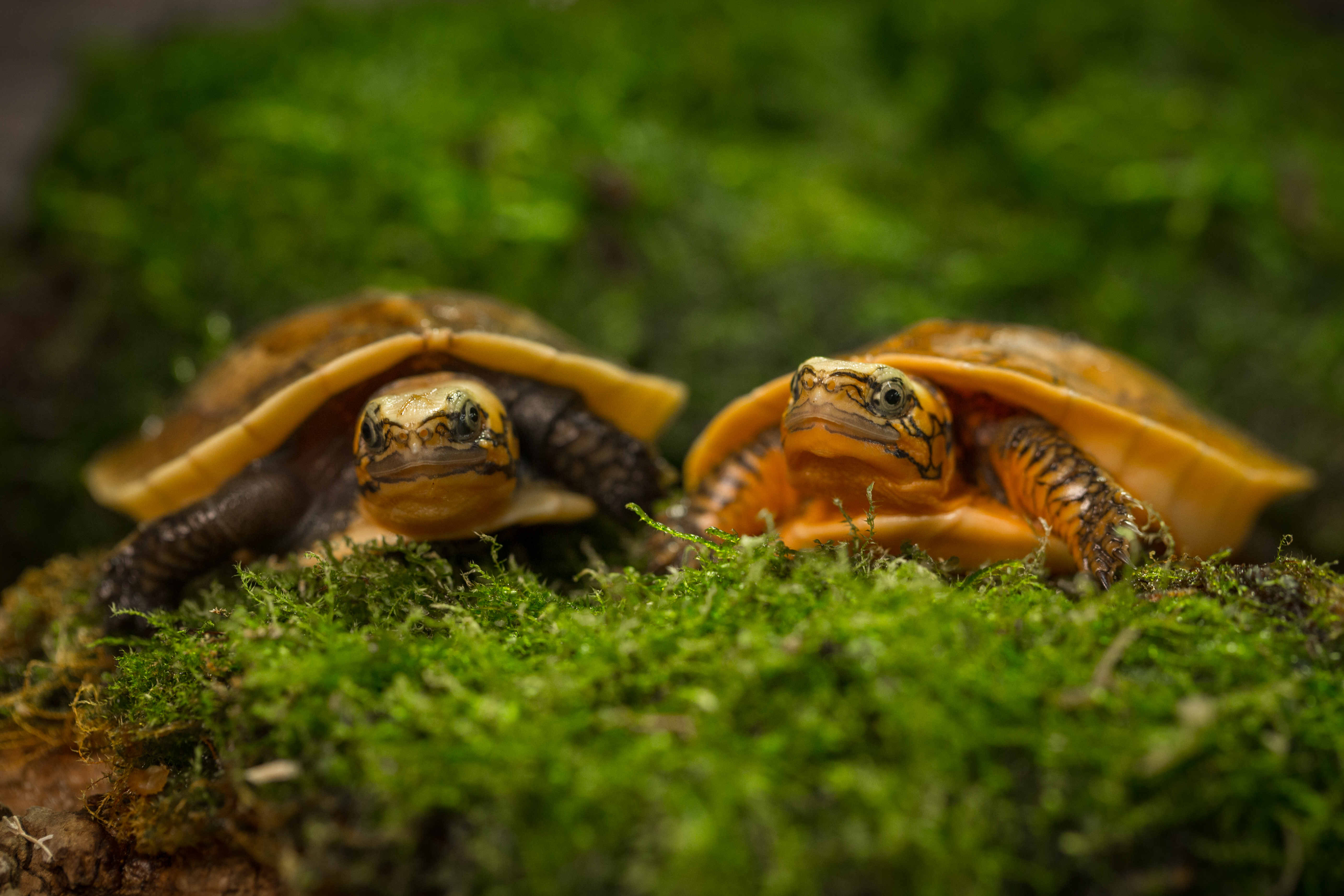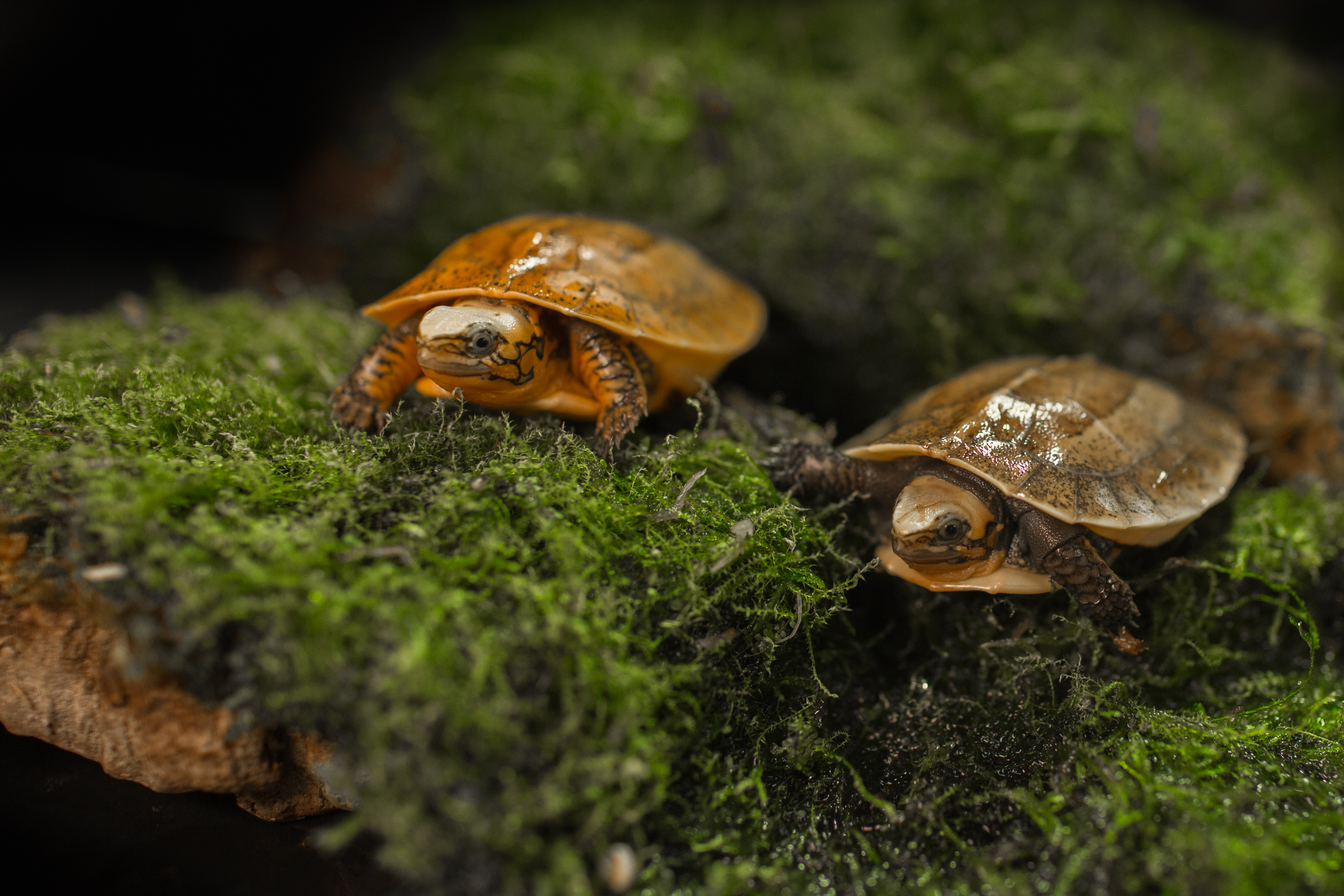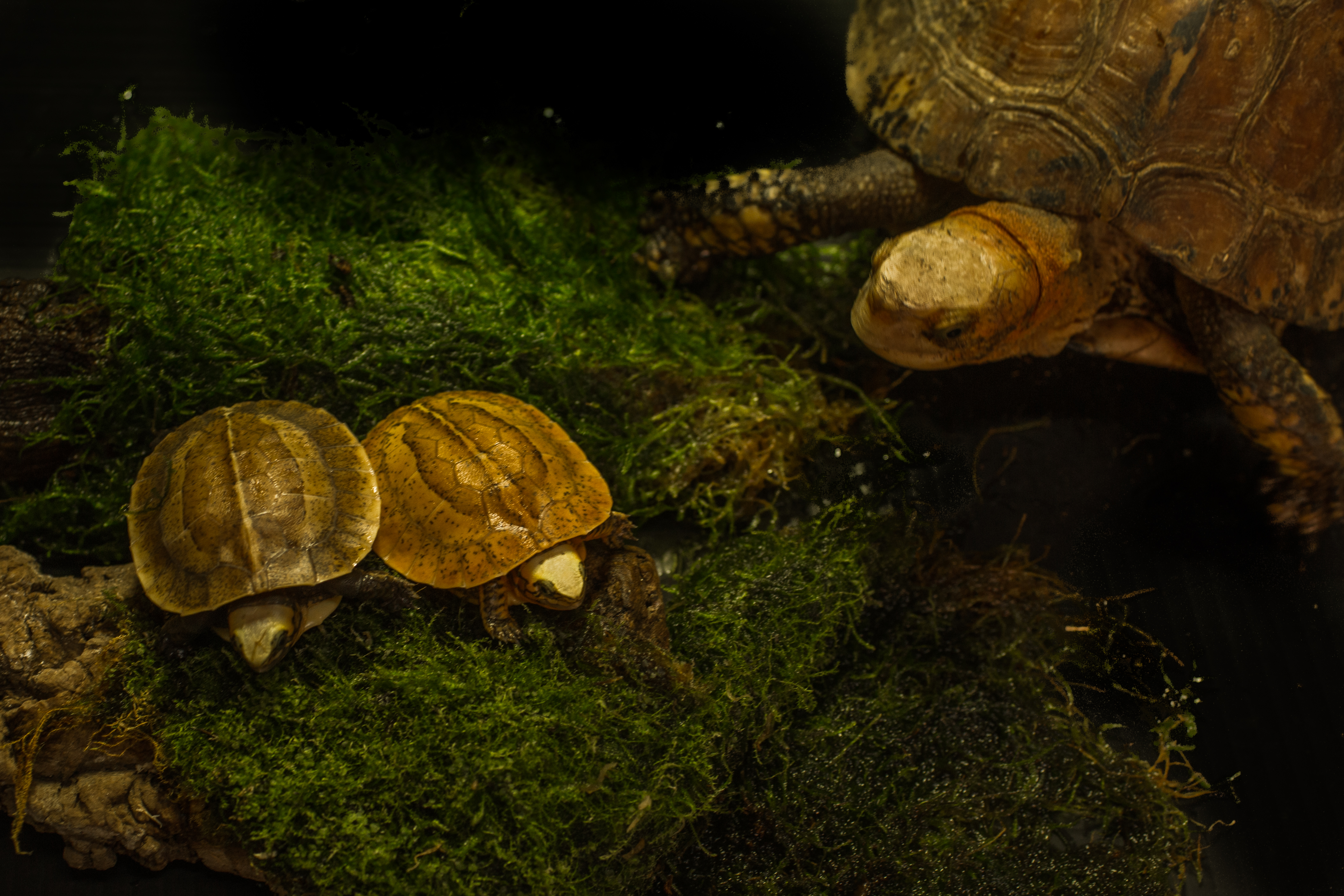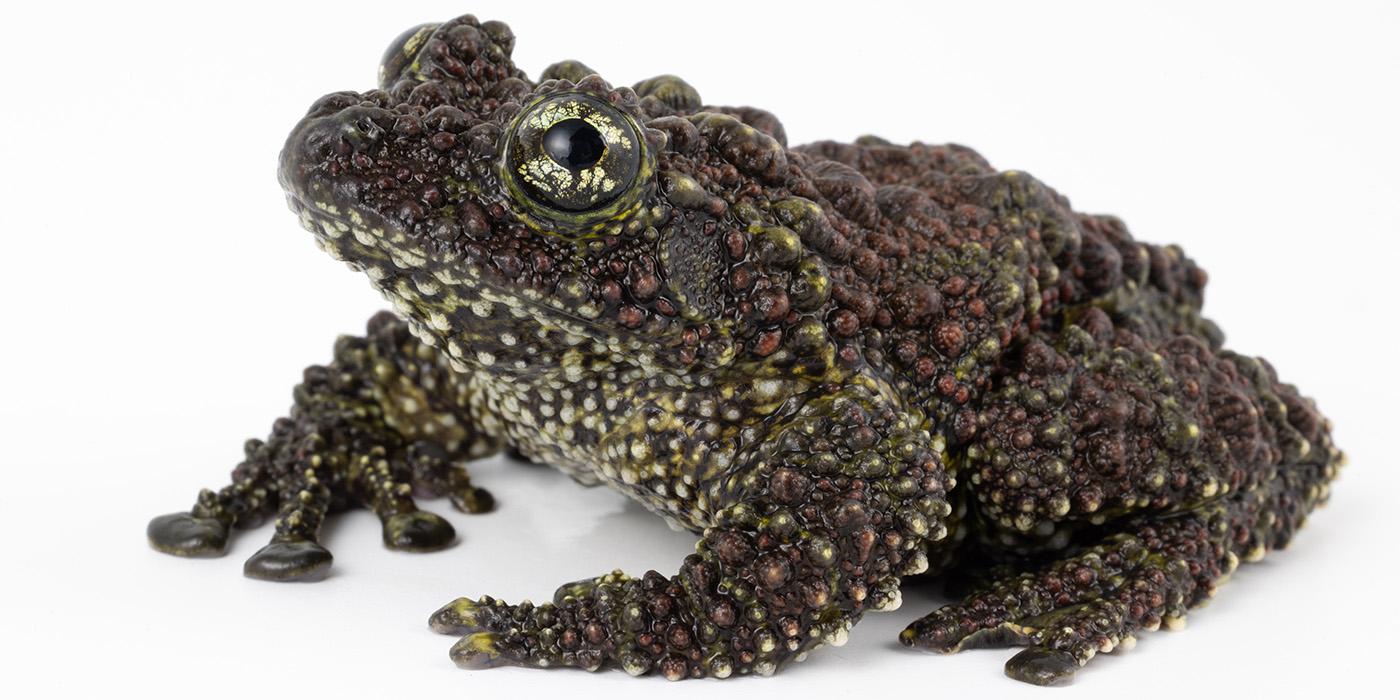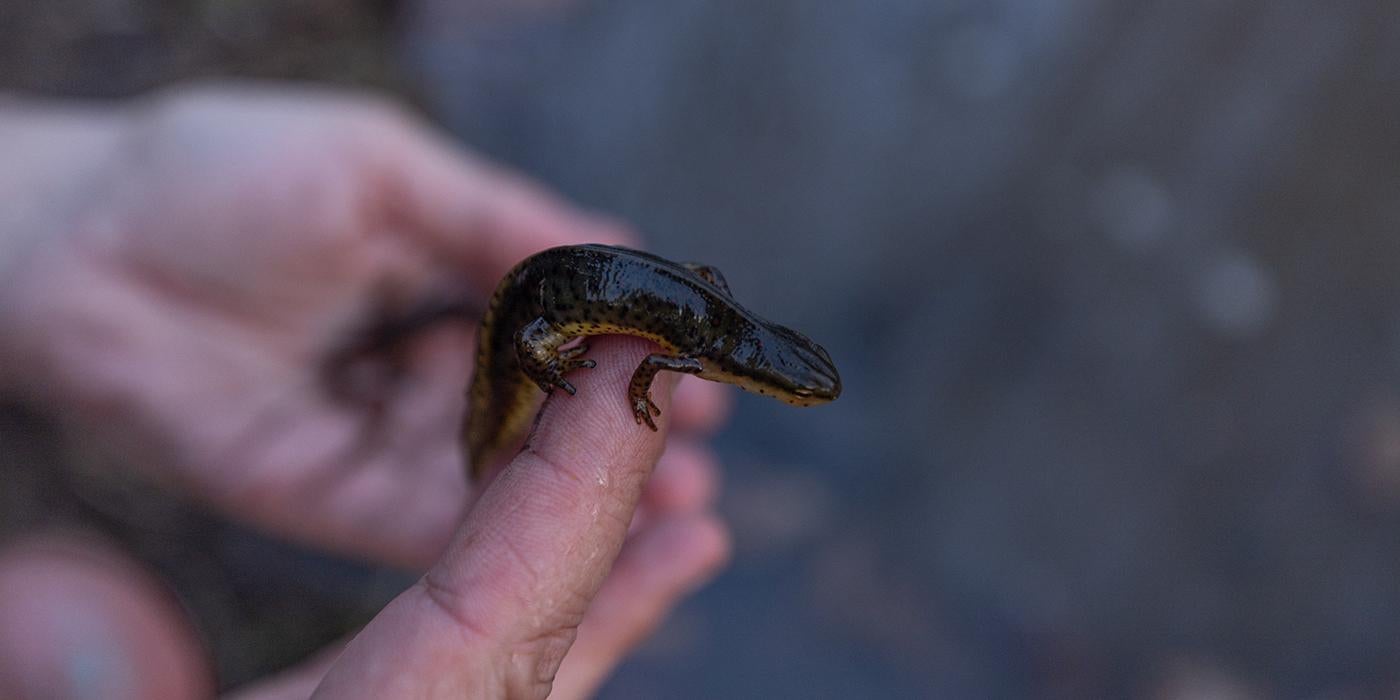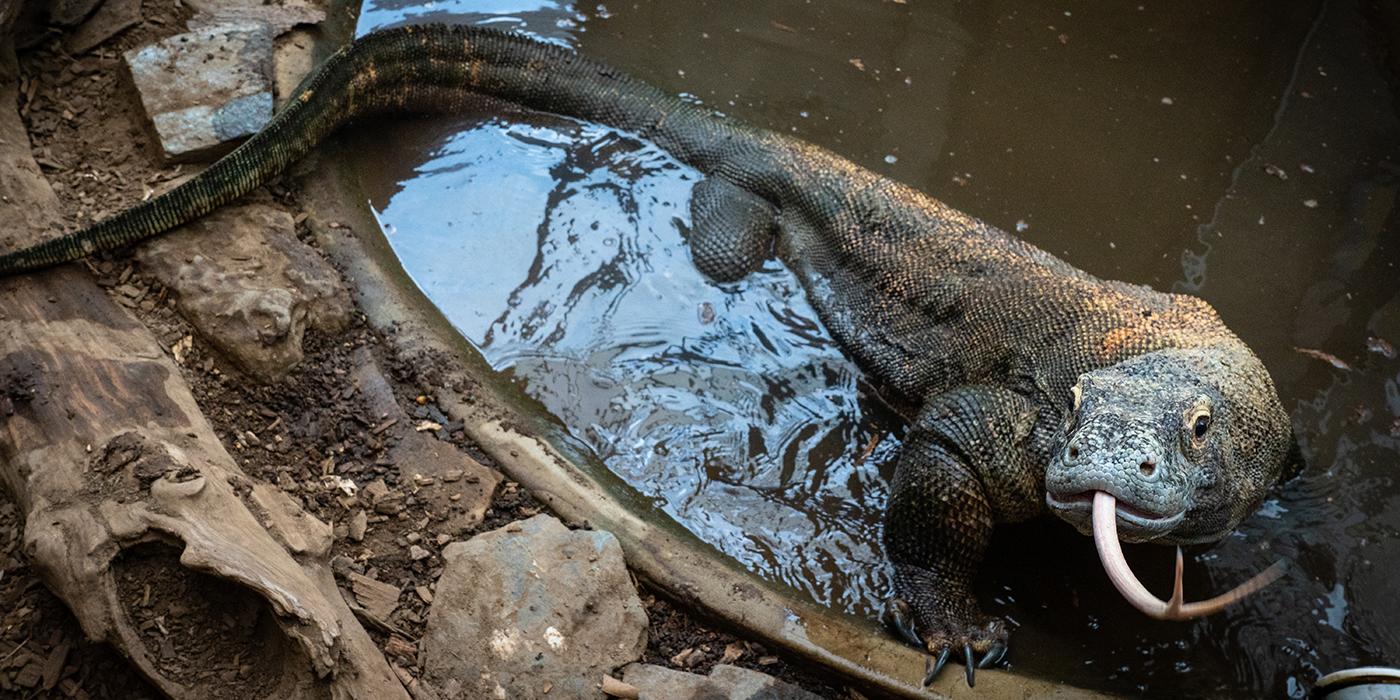Critically Endangered Bourret’s Box Turtles Hatch at the Smithsonian’s National Zoo
Keepers at the Smithsonian’s National Zoo’s Reptile Discovery Center are celebrating a conservation success five years in the making: a pair of Bourret’s box turtle hatchlings. These young are the first of their species to hatch both at the Zoo and as a part of the North American Association of Zoos and Aquariums’ (AZA) Species Survival Plan (SSP) for Bourret’s box turtle.
Ever since the turtles emerged from their shells June 12, keepers have closely monitored them to ensure they are eating and gaining weight. They appear to be healthy and thriving, weighing 25 grams each—about 1/52 the size of their mother, who weighs 1,300 grams. Staff have not yet verified the 10-day-old turtles’ sex, as they show no sexual dimorphism at this age. The young turtles, as well as the adult female and two adult males, will remain off-exhibit while under observation.
The Bourret’s box turtles’ parents arrived at the Zoo in 2012 following a SSP breeding recommendation. From October to March, adult Bourret’s box turtles undergo a period of brumation—a hibernation-like state based on temperature cycling. It is only after completing this annual process that successful reproduction occurs. Despite the female producing eggs every year since 2013, this was the first year the eggs developed fully and hatched.
Bourret’s box turtle eggs can be difficult to hatch in human care, in part because the incubator’s humidity and temperature must be set at a specific range in order for embryonic development to occur. Keepers checked on the incubated eggs daily and made minor adjustments to maintain this range. The female laid her first clutch of this year March 22, and these hatchlings emerged after a 12-week incubation. Keepers are cautiously optimistic that a second clutch, laid April 29, will hatch with similar success. The Zoo will share the information gathered about this species’ breeding and development with AZA for the benefit of other institutions that exhibit and want to breed this species.
Scientists estimate only 2,300 Bourret’s box turtles remain in their native habitat, the evergreen forests of Vietnam and Laos. These terrestrial turtles are considered critically endangered by the International Union for Conservation of Nature, as their populations have declined more than 90 percent since the mid-1950s due to habitat deforestation and illegal trafficking in the food and pet trade.
# # #
Image Gallery

